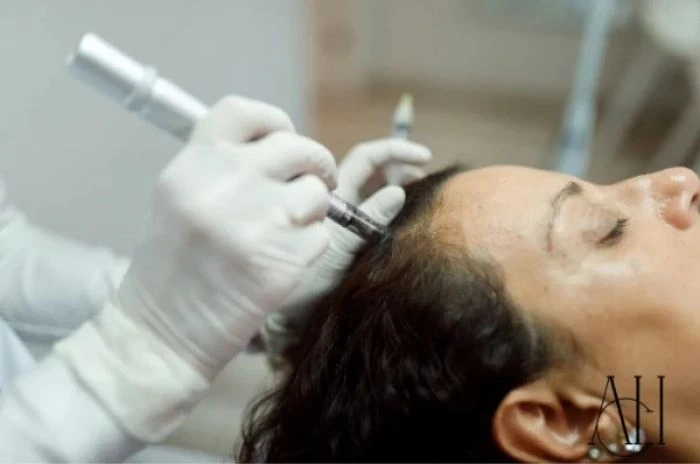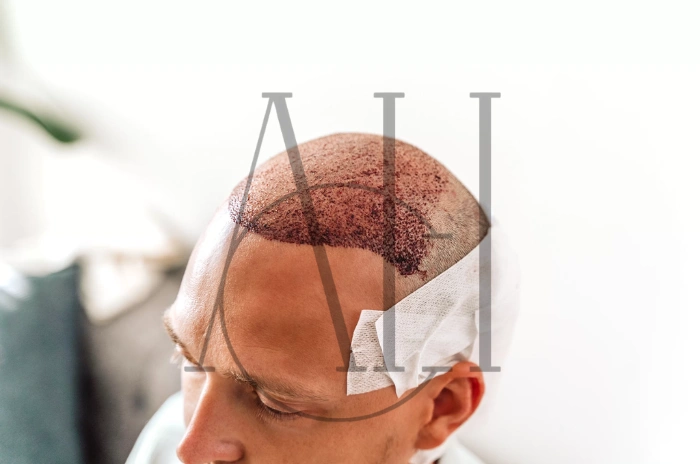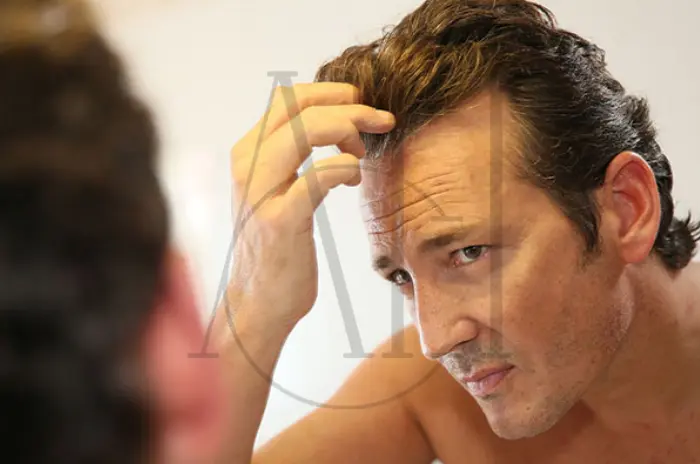Hair loss is no longer just a male concern. In recent years, more women are turning to hair transplant solutions to regain their confidence and restore a fuller, natural-looking appearance. With its experienced clinics, competitive pricing, and rising reputation in medical tourism, Albania-especially its capital Tirana-has become a popular destination.
Thanks to advancements in technology and highly trained professionals, modern hair transplants are more precise, less invasive, and yield exceptionally natural results. Clinics in Tirana are known for offering a patient-centered approach from consultation to aftercare.
Whether you’re dealing with thinning hair, hormonal shedding, or a receding hairline, this guide will walk you through all you need to know about Hair Transplant for Women in Albania, including available techniques, what to expect, and key tips for a successful experience. This guide will explore everything you need to know about Hair Transplant for Women in Albania, including techniques, expectations, and practical tips.
Table of Contents
ToggleIs Female Hair Transplant Common in Tirana?
Demand and Trends
The demand for female hair transplants in Tirana is steadily increasing, and this is no longer a niche service. Albania’s reputation for combining affordability with high medical standards is drawing women from across Europe, the Middle East, and beyond.
What sets Tirana apart is not just cost-effectiveness, but the level of personalized care and natural results. Clinics are equipped with state-of-the-art technology and staffed by surgeons who are trained internationally. Moreover, the welcoming and safe environment appeals especially to female patients looking for discreet yet effective solutions.
Key reasons why more women are choosing Tirana:
-
No-shave DHI options ideal for maintaining appearance
-
Affordable, all-inclusive packages with no hidden fees
-
Female-focused care with private consultation and procedure rooms
-
Growing success stories shared online and via word-of-mouth
The shift from male-only demand to a balanced focus on female needs has led to a boom in services specifically designed for women. Clinics now offer flexible appointment times, multilingual staff, and assistance with travel and accommodation-all tailored to support the unique needs of female patients.
Unlike the past, when hair transplants were more male-dominated, the trend has shifted with tailored solutions for female patients now widely available. The rise of social media and increased awareness have also encouraged more women to seek professional help earlier in their hair loss journey. Clinics are adapting their services to meet these needs, offering female-centered care, customized consultations, and even female-only surgical teams for added comfort.
Causes of Female Hair Loss
Hormonal vs. Genetic Factors
Female hair loss is often triggered by a complex mix of hormonal and genetic factors. Conditions like polycystic ovary syndrome (PCOS), menopause, and thyroid imbalances can cause hormonal disruptions that lead to thinning hair. Genetically, androgenetic alopecia (female-pattern baldness) is the most common cause and typically manifests as a general thinning over the crown, rather than bald patches.
Other causes include extreme stress, iron deficiency, rapid weight loss, and autoimmune conditions such as alopecia areata. Post-pregnancy hormonal fluctuations and tight hairstyles that cause traction alopecia also contribute to hair shedding. A detailed diagnosis through blood tests and scalp analysis is essential to determine the most appropriate treatment.
Tip: Addressing the underlying cause before seeking a transplant can improve long-term outcomes. Sometimes, medication or lifestyle changes can slow down or even reverse the process.
- Hormonal Changes
Hormonal shifts during pregnancy, menopause, or conditions like polycystic ovary syndrome (PCOS) often lead to hair thinning or shedding. - Genetic Factors
Many women inherit female pattern hair loss (androgenetic alopecia), a common condition that affects millions worldwide. - Stress and Lifestyle
Chronic stress, an unhealthy diet, and poor sleep habits frequently trigger telogen effluvium, a condition causing temporary hair shedding. - Medical Conditions
Hair loss can also stem from thyroid disorders, anemia, or autoimmune diseases such as alopecia areata. - Hair Styling Practices
Using excessive heat styling tools, chemical treatments, or tight hairstyles often causes traction alopecia, a type of hair loss resulting from physical stress on hair follicles.
Genetics vs. Hormones: While genetics determine the pattern and likelihood of hair loss, hormonal imbalances often trigger sudden or accelerated shedding. A thorough evaluation can help distinguish between the two and guide your treatment plan.

Techniques Suitable for Women
DHI and No-Shave Options
One of the most exciting advancements in hair restoration for women is the DHI (Direct Hair Implantation) technique. Unlike older methods, DHI provides a more precise, natural, and minimally invasive approach that aligns perfectly with female patients’ aesthetic expectations.
Here’s why DHI stands out:
-
No shaving required: Maintain your current hairstyle with minimal or no shaving at all.
-
High precision: Hair follicles are implanted directly using a patented implanter pen.
-
Natural density and direction: Perfect for restoring volume without an artificial look.
-
Minimal downtime: Return to your daily life quickly and comfortably.
Unlike FUE, where the donor area is often shaved entirely, DHI allows for strategic trimming that’s easily camouflaged under existing hair. This makes it a discreet option, especially for women who prefer privacy and subtle transformation.
What makes DHI even more attractive is the gentle handling of grafts. The follicles are extracted and implanted one by one, reducing trauma and improving survival rates. The technique allows surgeons to mimic natural hair growth patterns with meticulous attention to angle, depth, and direction.
Did you know. Most patients can resume light activities within 2-3 days, with minimal signs of surgery. It’s the perfect balance between technology and beauty.
In Tirana, top clinics utilize advanced tools and magnification systems that enhance precision. Whether you’re targeting the crown, hairline, or temples, DHI offers consistent, natural results tailored specifically for women.

Aesthetic Differences in Design
Hairline Shape and Density
Hair transplant for women is not just about adding hair-it’s about restoring aesthetic harmony and enhancing natural beauty. Women typically desire a more subtle and refined transformation, and this is where the artistic side of hair transplantation becomes essential.
Here’s what makes female hairline design unique:
-
Softer and rounder contours: Unlike the M-shaped hairlines common in men, women’s hairlines follow a more oval and smooth pattern.
-
Lower hairline positioning: Surgeons often restore the hairline to a position that complements the forehead and facial proportions.
-
Even density: Rather than concentrating on bald patches, female transplants aim for fuller volume across thinning areas.
Surgeons in Tirana pay close attention to these aesthetic factors. They often use high-resolution imaging tools and simulation software during consultations to visualize the final result before the procedure begins. This allows patients to actively participate in shaping their new hairline.
A well-designed hairline does more than restore hair-it rejuvenates the entire face.
Facial proportions, forehead size, age, and hair texture are all considered in the planning process. Experienced doctors also factor in future aging, ensuring that the results remain harmonious over time.
By placing grafts with careful attention to direction and layering, specialists create a seamless transition between existing and transplanted hair. This meticulous approach is what gives female patients a soft, voluminous, and natural-looking result they can feel confident about.
Clinic Privacy and Female Comfort
What to Expect During Surgery
Clinics in Tirana prioritize female patient comfort. Many offer private consultation and treatment rooms to ensure confidentiality. During the procedure, local anesthesia is applied to minimize pain, and the surgery typically lasts 6-8 hours depending on the number of grafts.
The atmosphere is kept calm and professional, with female staff often available to assist. Patients are encouraged to wear comfortable clothing and may listen to music or watch movies during the procedure. Light refreshments and breaks are provided to help the patient stay relaxed.
Post-op care instructions are thoroughly explained, and follow-up services include regular check-ins and advice on scalp care, nutrition, and hair growth tracking. Clinics also offer 24/7 assistance in the days following surgery to ensure optimal healing.
Hair Transplant Packages in Albania
To make the process smoother and more affordable, many clinics offer Hair transplant packages in Albania tailored to women. Here’s a sample comparison:
Hair Transplant Packages in Albania (Sample Table)
| Package Type | Includes | Average Cost |
|---|---|---|
| Basic | Consultation, Procedures, Medications | €1,500 – €1,800 |
| Standard | Above + Hotel Stay, Airport Transfer | €1,900 – €2,300 |
| Premium | All Above + Private Room, Aftercare Kit, City Tour | €2,400 – €2,800 |
These packages provide convenience and value, making it easier for women to travel and receive high-quality care without hidden costs. Some clinics also offer group discounts or seasonal promotions, particularly for international clients traveling with family members.
Why Hair Transplant Is a Game-Changer for Women
Hair transplants provide a permanent and natural-looking solution for women facing significant hair loss. Thanks to modern advancements, the procedure has become more effective and accessible for female patients.
Natural Results
Techniques like Follicular Unit Extraction (FUE) and Direct Hair Implantation (DHI) ensure that transplanted hair seamlessly blends with existing strands, creating realistic outcomes.
Customized Treatment Plans
Each procedure is tailored to match an individual’s unique hair loss pattern, facial structure, and aesthetic preferences, ensuring personalized results every time.
Minimal Scarring
With methods such as FUE and DHI, surgeons extract individual hair follicles, which significantly reduces visible scarring and allows for versatile hairstyles.
Debunking Myths About Hair Transplant for Women
Many misconceptions surround hair transplants, which can discourage women from considering this life-changing procedure.
1. Hair Transplants Are Only for Men
While men have historically been the primary recipients, modern techniques cater equally to women, with excellent results.
2. The Results Will Look Fake
Advanced techniques, like DHI and FUE, ensure natural-looking results that blend seamlessly with existing hair.
3. The Procedure Is Incredibly Painful
Thanks to local anesthesia, most patients experience little to no discomfort during the process.
FAQ for Hair Transplant for Women in Albania: A Complete Guide
Can women really get a hair transplant?
Yes, absolutely. Female hair transplants are effective and widely available, especially in clinics across Tirana. The procedures are tailored to the unique causes and patterns of female hair loss.
Will my hair be shaved before the procedure?
Not necessarily. DHI techniques used in many Albanian clinics offer no-shave options, which means only small, hidden areas may be trimmed, preserving your overall appearance.
Is DHI better for women than FUE?
In many cases, yes. DHI allows for greater precision and doesn’t require full shaving, which makes it especially suitable for women concerned with aesthetics.
How long does it take to see growth?
Initial growth typically begins around 3 months after the procedure, with more visible results at 6 months. Full results can be seen after 12 months.
Do clinics in Tirana offer private rooms?
Yes. Many reputable clinics provide private consultation and treatment rooms to ensure comfort and privacy for female patients.
Is there a specific age that’s best for a female hair transplant?
Hair transplants can be done on adult women of any age, but it’s most effective when hair loss has stabilized. Typically, women over 25 are ideal candidates.
Can I color or style my hair after the transplant?
Yes, but it’s advised to wait at least 6-8 weeks before coloring. Styling is allowed after the initial healing period, and clinics provide aftercare guidance for safe hair management.




